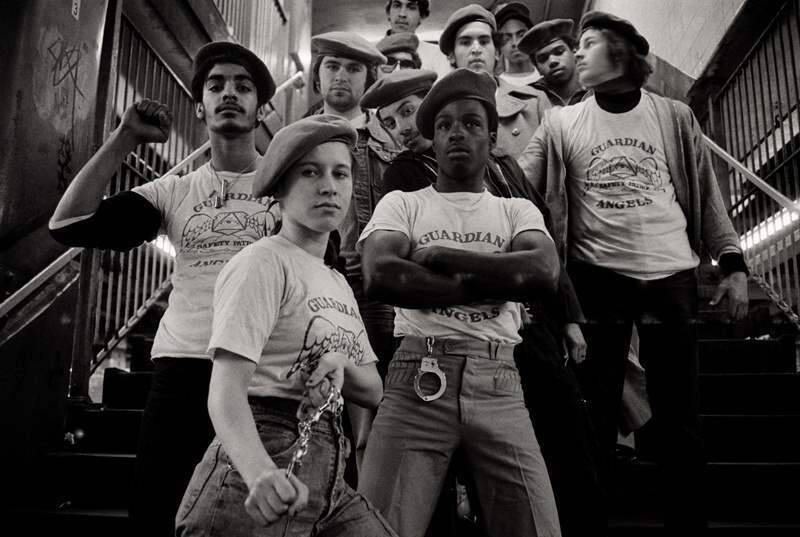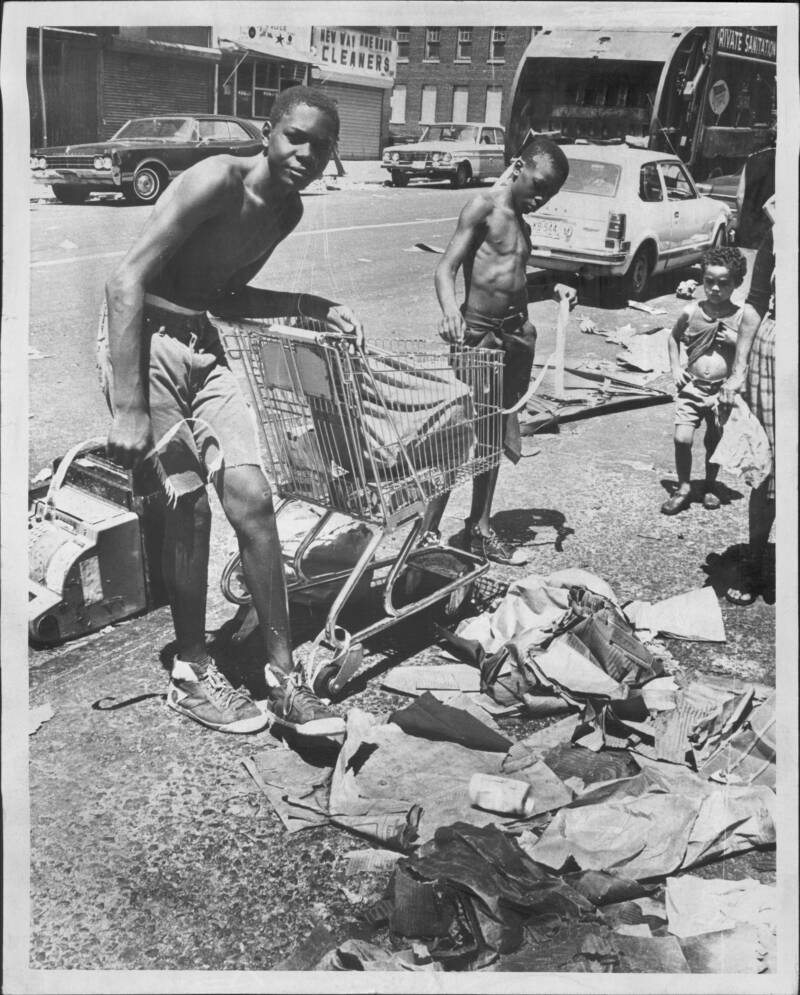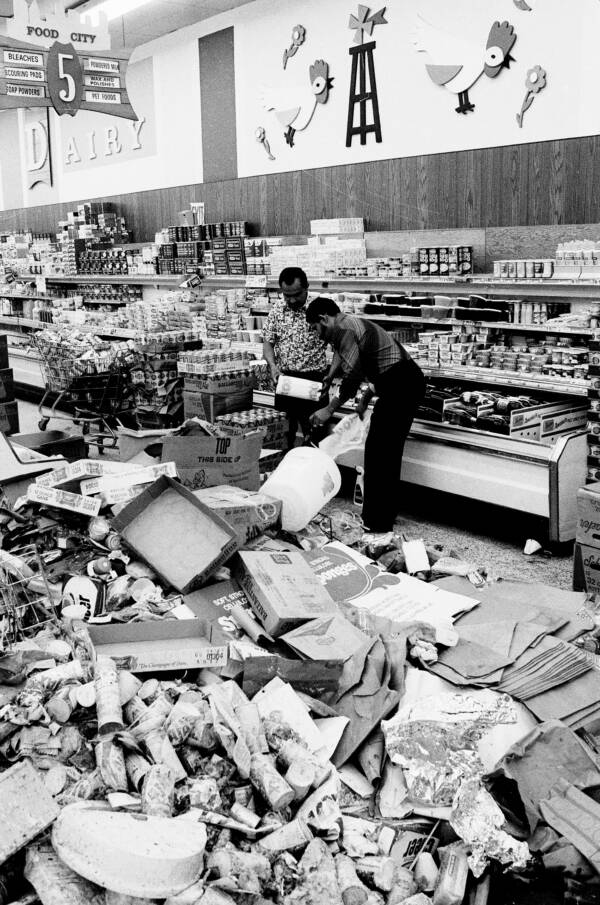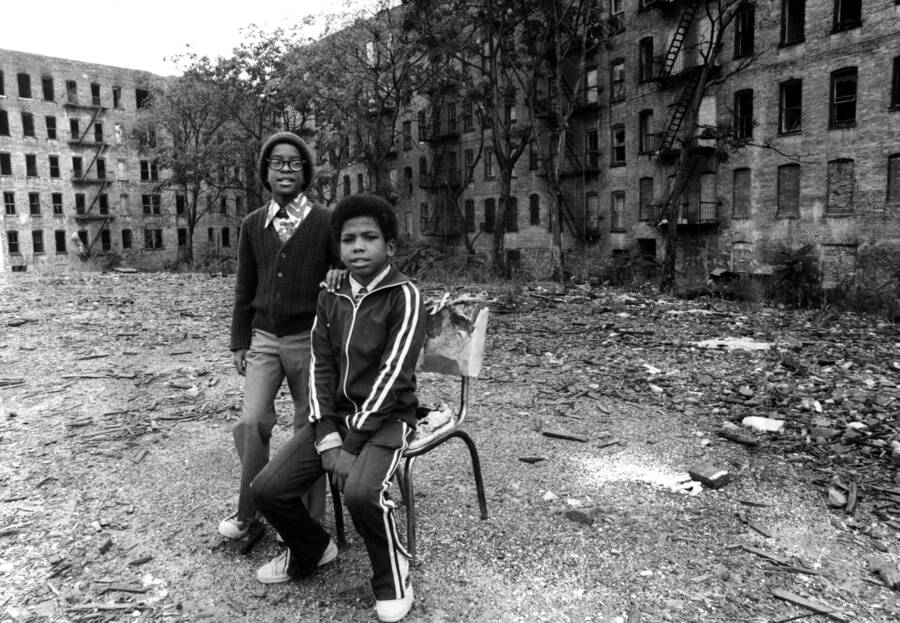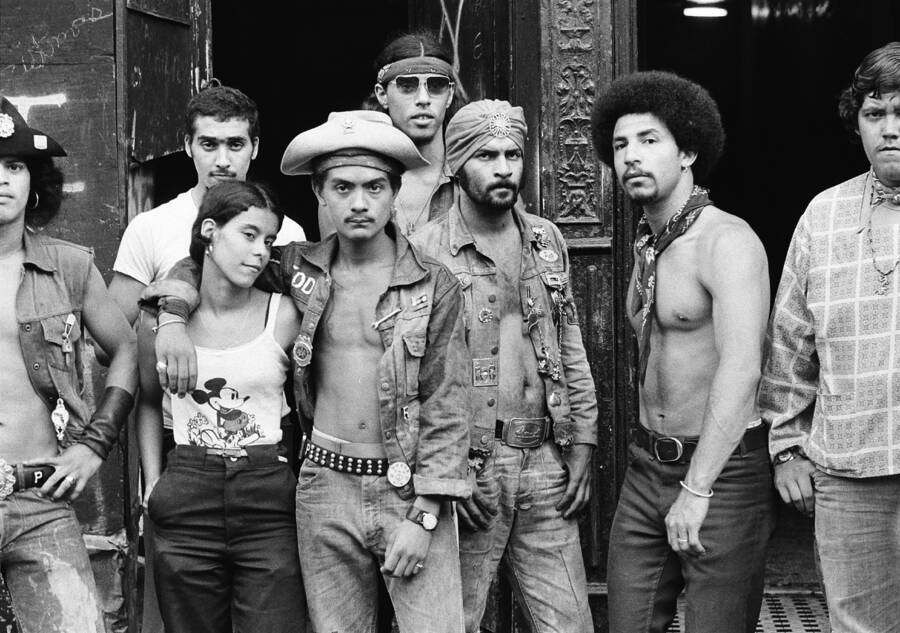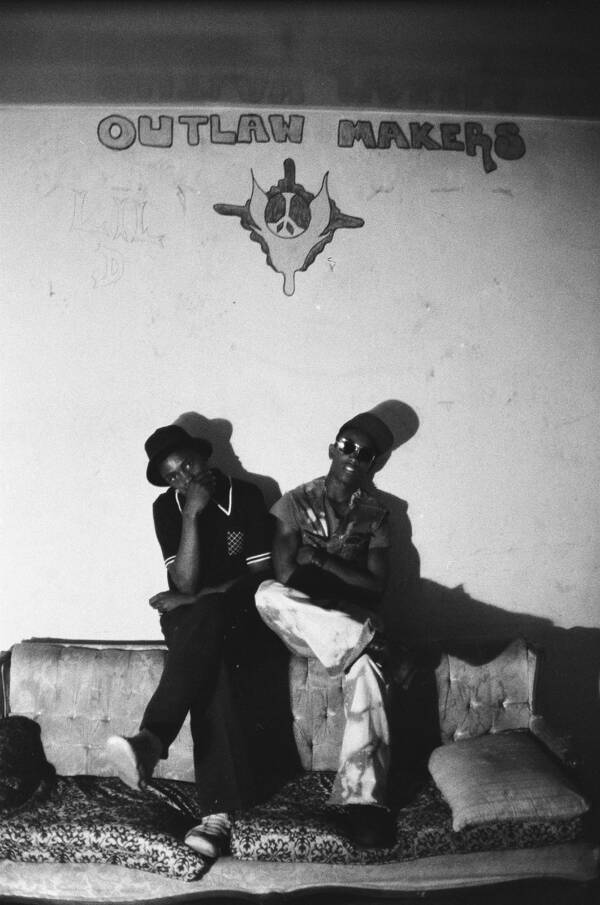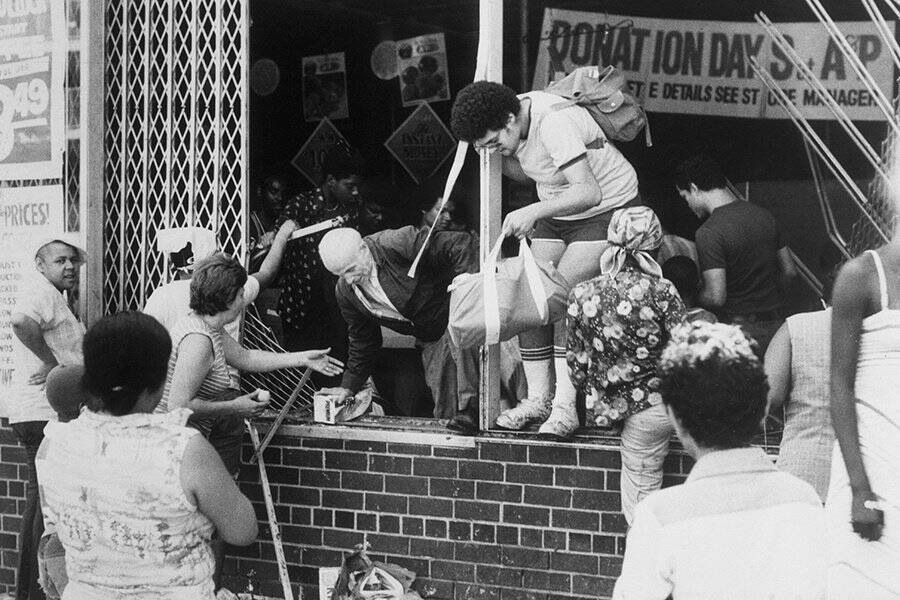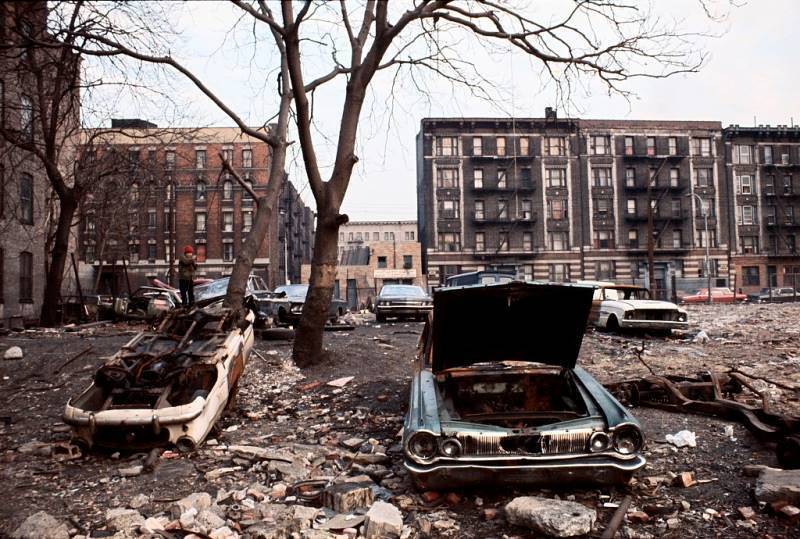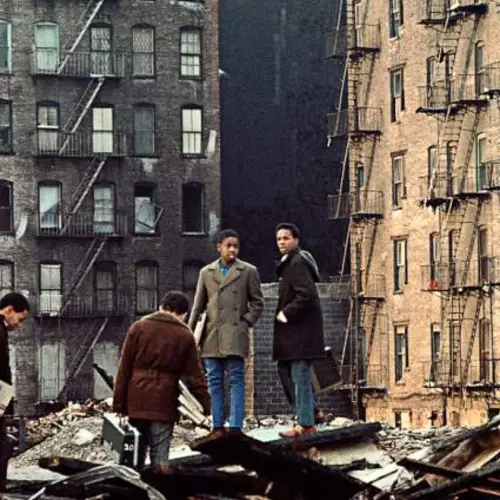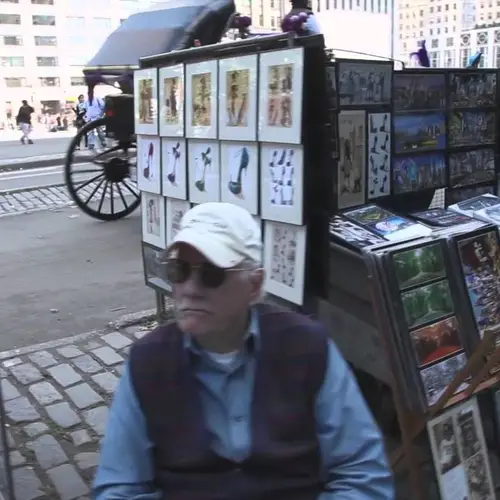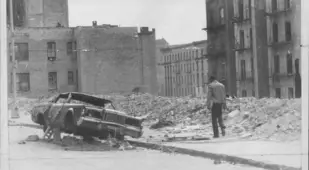While white flight reduced the Bronx's population by 30 percent during the 1970s, much of the borough literally burned to the ground.
New Yorkers often reflect on the 1970s as the bleakest, most crime-ridden, and most uncertain time the city has ever faced — with good reason. There was a whirlwind of tectonic economic, criminal, and cultural shifts occurring at once that must have made the 1970s seem like the end times — particularly in the Bronx.
Though many Americans remember 1977 as the year when Jimmy Carter became President of the United States and some were particularly fixated on the U.S. Senate as it began its hearings on MKUltra, the Bronx had more pressing issues to grapple with.
In July of 1977, the average temperature during a miserable 10-day heatwave was an unprecedented 97.1 degrees Fahrenheit, with a terrifying citywide blackout adding to anxieties. With an equally heated mayoral race on top and the hell of a looming economic downturn, tensions were at an all-time high.
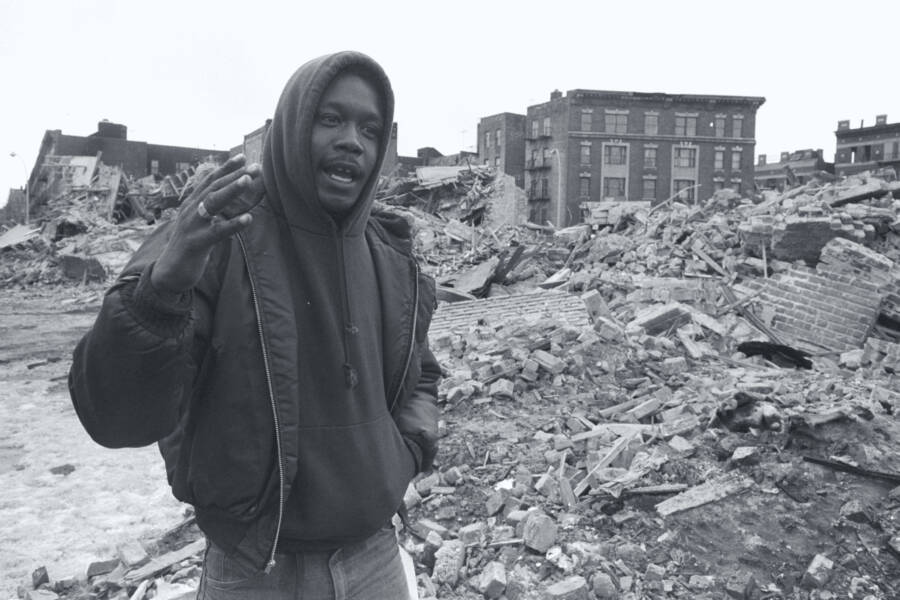

Owen Franken/Corbis/Getty ImagesA man walks through the rubble of his borough, 1976. Bronx, New York.
As The New York Post recalls, the South Bronx was eventually engulfed in flames. Seven different census tracts in the borough lost over 97 percent of their buildings to fire and abandonment between 1970 and 1980.
The NYPD's biggest manhunt in history for a terrifying serial killer dubbed the Son of Sam didn't assuage anyone's concerns that things were in horrific shape. Still, this was New York City; a town that had beat the odds before and that has little patience for slouchers.
The Bronx was burning, yes, but the Bronx also decided that surviving this hellfire was the only respectable way forward.
The Bronx Is Burning Among Urban Decay
The impoverished, crime-ridden, and decaying New York City of the 1970s bears almost no resemblance to the booming metropolis of 2019. In 1977, the unemployment rate in the city was two and a half times what it is today, according to the Department of Labor.
Infrastructure was crumbling and buildings were left abandoned. Having one in 10 citizens scrounging for money while crime rates surged and gang activity became endemic did not produce the most savory of melting pots to put it mildly.
As The New York Times remembers it, 1976 saw the largest spike in reported felonies on record — a shocking 13.2 percent. In the meantime, funding reductions for vital fire companies in the Bronx over the decade led to an astonishing amount of devastating blazes.
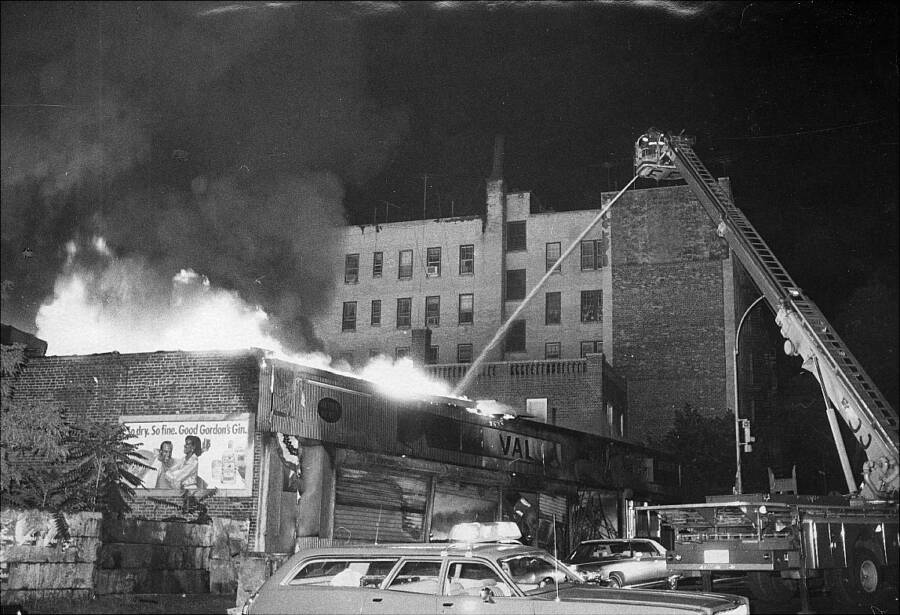

Al Aaronson/NY Daily News Archive/Getty ImagesSeven different census tracts in the Bronx lost over 97 percent of their buildings to fire and abandonment between 1970 and 1980. This building on Tremont and Grand Avenue is one of them.
Much of these were blamed on arsonists, but the reality was more systemic, bureaucratic, and racist. It began in 1971 when mayor John Lindsay asked the FDNY's chief of department, John O'Hagan, for a few million dollars to help close a budget deficit. They used a think tank called New York City-RAND to create computer models to cut financial corners. This led to 13 companies being closed — including some of the busiest companies in the Bronx.
The models seemingly indicated that black, fire-prone areas had been over-served. Former chief Elmer Chapman, who ran the Bureau of Planning and Operations Research, said O'Hagan was undeniably politically motivated in this effort.
"Mostly we used [the RAND models] for the cuts, but if they came back saying to close a house in a certain neighborhood, well...if you try to close a firehouse down the block from where a judge lived, you couldn't get away with it."
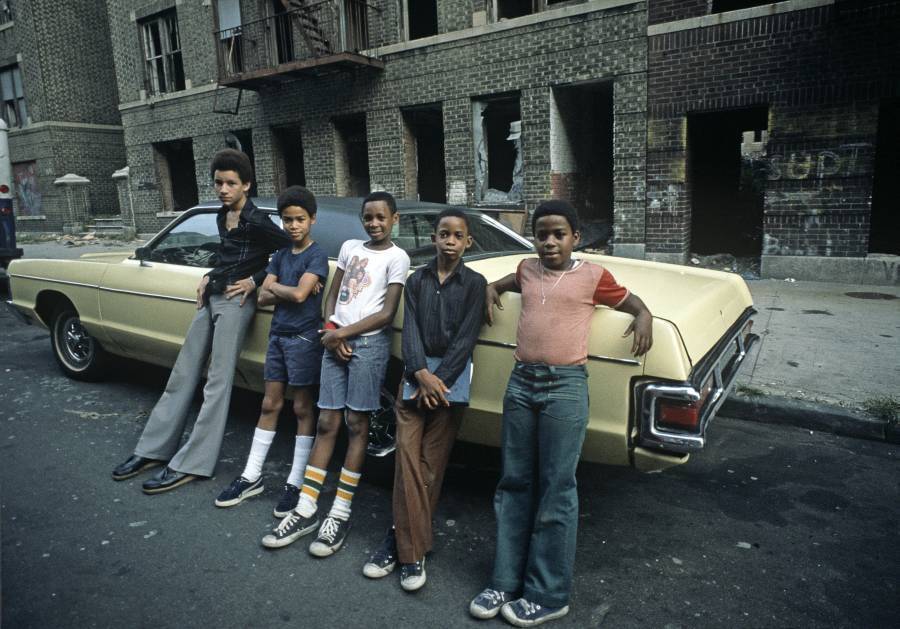

TwitterYoung kids hang out in the South Bronx in the middle of summer — when Son of Sam stalked women, the blackout hit the city, and the Yankees won the World Series.
They consequently just closed firehouses in poor areas because "the people in those neighborhoods didn't have a very big voice." This led to a 70 percent cut in fire inspections, the fire marshal program being shut down, and the use of archaic equipment by what fire companies remained.
While the U.S. experienced a 40 percent drop in deaths by fire from the mid-1960s to late 1970s, New York City's numbers more than doubled. As for blaming arsonists, less than 7 percent of fires by the late 1970s were found to have been criminally initiated.
This economic downturn and fiscal cuts to social welfare programs, ironically, also helped one man commit six murders.
The Summer Of Sam: From The New York City Blackout To Serial Murders
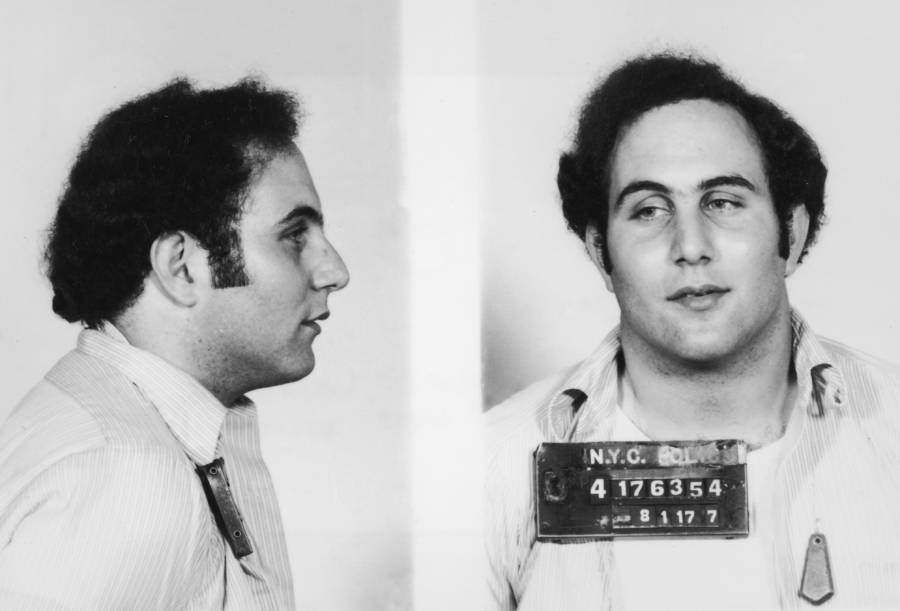

Hulton Archive/Getty ImagesDavid Berkowitz, a.k.a. "Son of Sam," poses for a mugshot following his arrest on Aug. 10, 1977.
"You had looting, you had a homicidal maniac, you had the city in dire straits financially," said Mitchell Moss, a professor at New York University's Urban Research Center. "There was a genuine breakdown in the city's self-confidence."
New York City couldn't get any wilder than it was in 1977. In addition to the peak of Studio 54 and an infamous blackout that led to mass looting — there was a serial killer on the loose, terrorizing the city through the pages of the New York Post and New York Daily News.
Beginning in the spring of 1977, the Son of Sam had begun leaving notes behind for police at the scenes of his murders, portions of which made it to the press who printed and reprinted the messages throughout the summer of 1977 along with every twist and turn in the investigation. Circulation soared and correspondents from as far away as the Soviet Union sent reporters to New York City to report on the case.
Then, on July 13 - 14, there was an abrupt and total loss of power throughout the five boroughs of New York City. According to Patch, New York was left in the dark for two whole days that initially left thousands of people stuck in subway cars underground.
The city's electric utility, Con Edison, called the five-borough power outage an "act of God" — one that led to immediate rioting and looting in many areas of the city but especially the Bronx.
All told, by the time power returned over 1,700 stores had been looted, with over $150 million worth of destruction in property damage done, and over 3,000 arrests. The chaos could not have come at a worse time for the NYPD who were in the middle of the single largest manhunt the department had ever conducted to date, desperate to apprehend the Son of Sam before he struck again.
He would strike again just two weeks after the blackout, on July 31, 1977, but it would be for the last time. Thanks to a witness, police were able to tie a yellow Ford Galaxie to the scene of the last murder and traced it to a 24-year-old postal worker living just north of the Bronx, in Yonkers, NY. Arrested at the end of the summer of 1977 — the so-called Summer of Sam — David Berkowitz had killed six, wounded another seven, and left some survivors maimed for the rest of their lives.
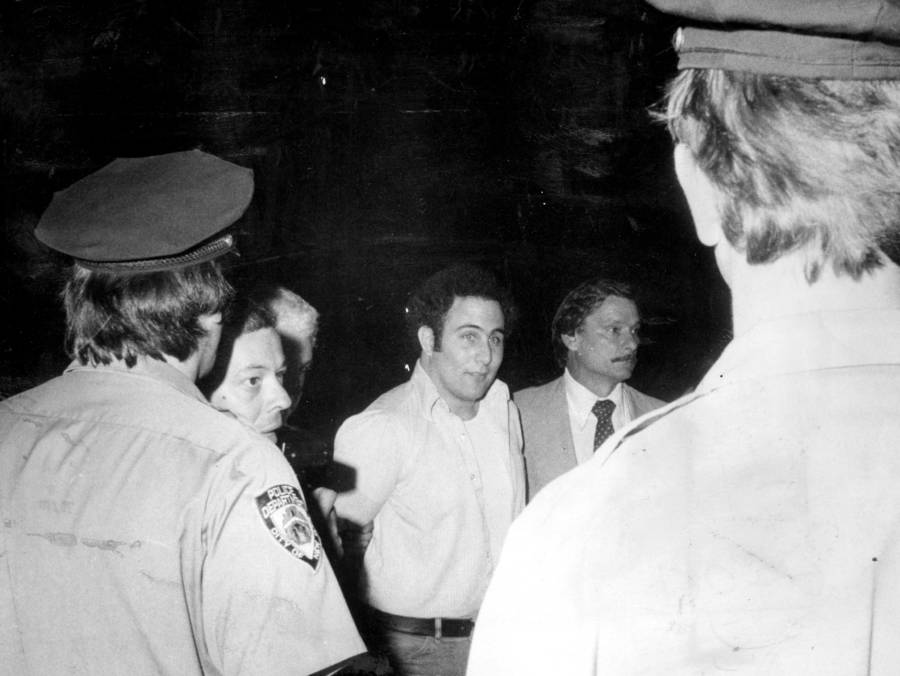

NY Daily News Archive via Getty ImagesOfficers take David Berkowitz, a.k.a. Son of Sam, into police headquarters following his arrest. Aug. 10, 1977.
Unfortunately, David Berkowitz's criminal career seemed to go back even further. When police searched his Yonkers apartment, they found hand-written notes of fires that he had apparently set throughout the Bronx in the early- to mid-1970s — as many as 1,400 by some estimates.
"We had him under surveillance for months, watching his car late at night when we didn't have any fires to run off to," said fire marshal Mike DiMarco.
Berkowitz's yellow Ford Galaxie had already been spotted fleeing the scene of two garbage fires on City Island in the Bronx in the mid-1970s. DiMarco consequently staked out the suspect's home but had to stop his surveillance when the fire marshal division was gutted. Had they continued, David Berkowitz may never have had the chance to escalate to serial murder.
Though this was a terribly dangerous period in the city's history, every yin has its yang. For the Bronx, that yang was comprised of the New York Yankees ending their 15-year-long championship drought and the birth of Hip-Hop.
Baseball, Gang Culture, And The Birth Of Hip-Hop


NY Daily News Archive/Getty ImagesYankees manager Billy Martin (right) and the team's strutting superstar, Reggie Jackson (left), nearly come to blows. Fortunately, Jackson hit three homers and secured the Yankees' World Series win.
"There were three things that were bad for the city: First was the blackout," said Ed Koch, who was running to defeat incumbent Mayor Abe Beame. "Second was the fear in the city with the Son of Sam. And third was Howard Cosell's comment that the Bronx was burning."
It was October, and a building near Yankee Stadium was indeed on fire as the New York Yankees and the Los Angeles Dodgers duked it in game 2 of the World Series. Throughout the game, a helicopter over the stadium providing wide shots for the game's broadcast would return no fewer than five times to show an abandoned building in the South Bronx burning into the night; the twin lights of Yankee Stadium and the enormous but anonymous blaze being the only major points of light in the darkness of the beleaguered borough.
Cosell never actually uttered the now-infamous words — "Ladies and gentlemen, the Bronx is burning" — that have since been attributed to him, but that didn't much matter. It was what everyone watching was thinking and it was the perfect metaphor for the plight of the city in 1977. But, with all that, New York wasn't knocked down but not out.
After Yankees right fielder Reggie Jackson hit three home runs — on three consecutive pitches from three different pitchers — in game 6 of the World Series, the Yankees would become World Champions and the city got a much-needed win to lift its spirits.
There was still life left in the city, after all — even in the Bronx. As gang activity soared in the Bronx and street warfare became a way of life, many looked for a refuge from violence around them in dance parties around the Bronx, fueled by a whole new sound: Hip-Hop.
Bronx residents sought refuge in parties to musically experiment and avoid the growing gang culture outside. According to The New York Times, for instance, police counted 130 gangs in the South Bronx in 1972.
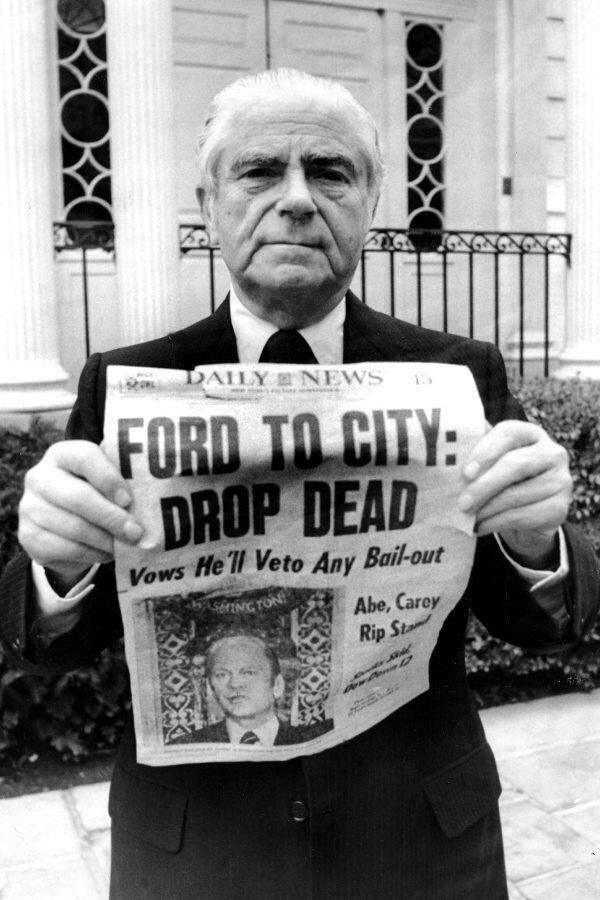

National Archives and Records AdministrationAs the city verged on bankruptcy, crime surged and fires roared. A frustrated then-mayor Abe Beame holds the paper up for all to see, following President Ford's refusal to use federal funds to bail out the city, how dire things have become.
These allegedly accounted for over 30 murders, 22 attempted homicides, 300 assaults, 10 rapes, and 124 armed robberies. In total, around 1,500 gang-related arrests were made. Police said these gangs had 9,500 members and aged between 13 and 30.
A lot of them were homeless or estranged from their families. Similarly afflicted Bronx residents chose another path — and helped build something permanent. According to WNYC, it was Clive Campbell (better known as DJ Kool Herc) that laid the first brick. Hip-Hop was born when he hosted a party at the 1520 Sedgwick Avenue apartment building in the Bronx. With two turntables and a sound system, he ushered in a music genre globally popular to this day.


David Corio/Michael Ochs Archives/Getty ImagesAfrika Bambaataa mid-performance. He, alongside DJ Kool Herc and Grand Wizzard Theodore, were pioneers of the game. 1980.
While the gangs outside distinguished themselves and their turfs with literal colors, music pioneers like Herc, DJ Afrika Bambaattaa, and Grand Wizzard Theodore used parties and styles of DJing to do the same. It was the latter who added the element of scratching records to the Hip-Hop fold. The South Bronx was of course also responsible for ushering in Hip-Hop's outdoor elements, like breakdancing and graffiti.
This arguably sparked the beginning of gang culture and Hip-Hop becoming enmeshed in the popular consciousness, but Bronx resident Buddy Esquire remembered his borough to be "a lot wilder back then," and that the tables have since turned: today's music is more violent while the Bronx is safer.
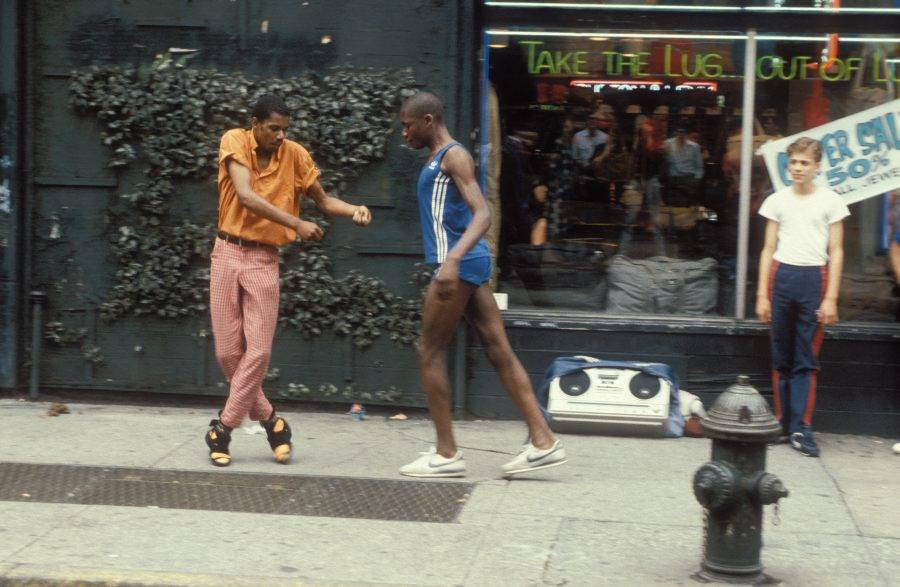

PYMCA/UIG via Getty ImagesThanks to the Bronx, Hip-Hop culture became more than a few house parties — and soon flooded the streets, and the world, with breakdancers and graffiti artists.
Hip-Hop was rooted in avoiding urban pitfalls, and telling it like it is. For author and journalist Marcus Reeves, that beautiful art form growing from the muck was vital. Some chose gang life. Some decided to become Guardian Angels. Others chose Hip-Hop.
"It was very important to see that this music come to the forefront because it allowed this voice of the poor and the working class back into the mainstream."
After learning about the rise of gangs, the birth of hip-hop, and the precarious state of the Bronx in the 1970s and 1980s, take a look at 37 photos of 1980s New York City — when crack was king. Then, check out 27 pictures of Times Square at the height of depravity.
